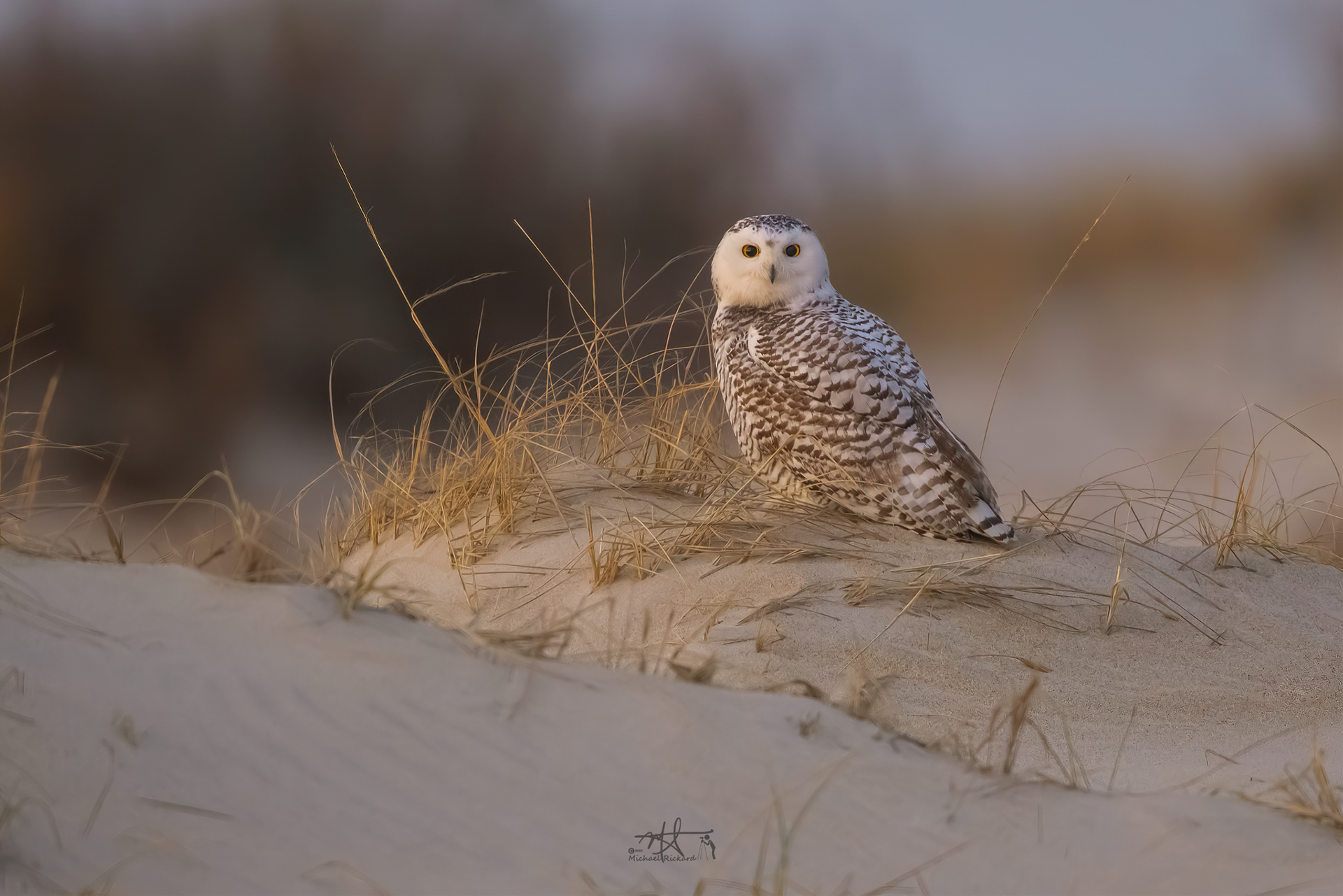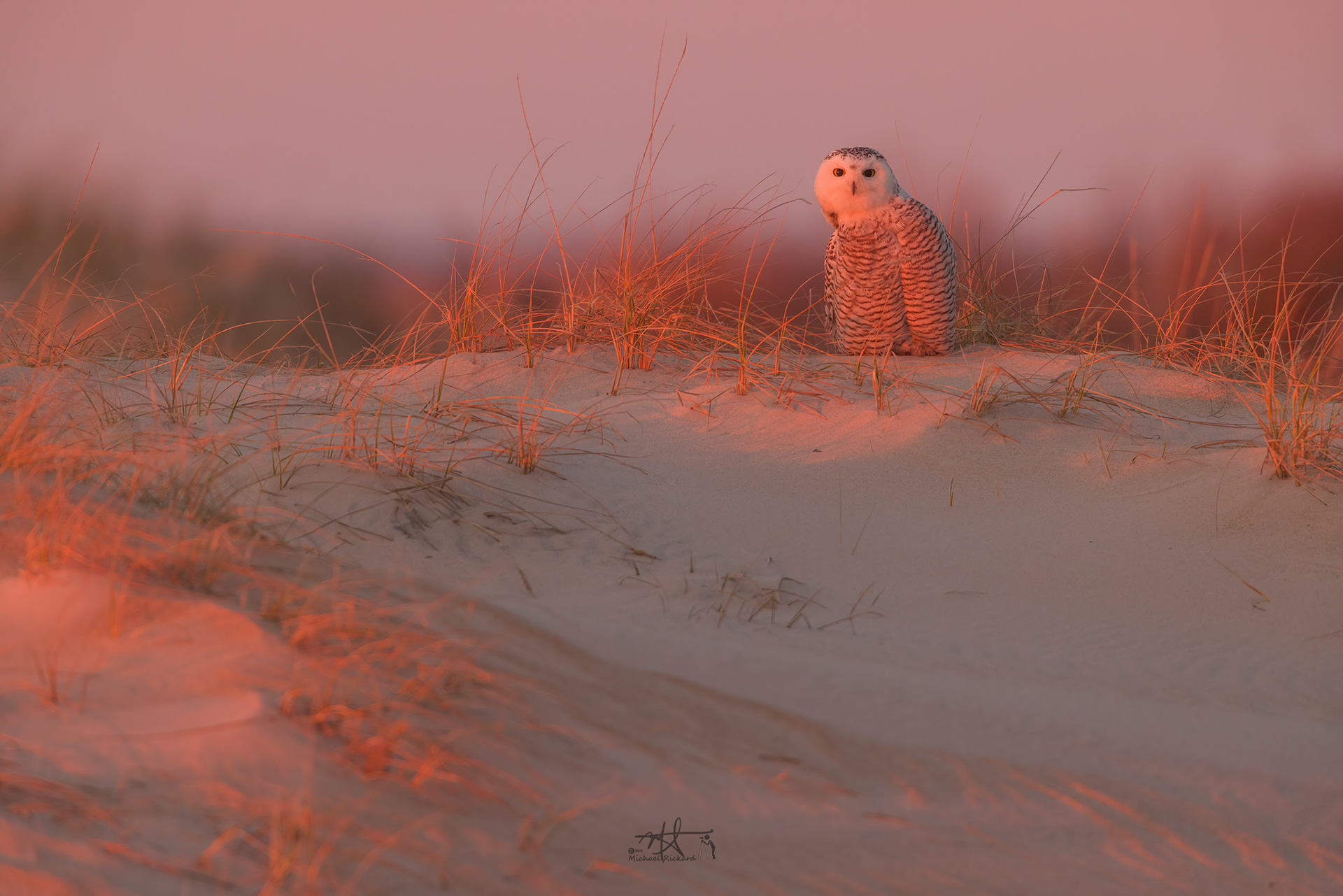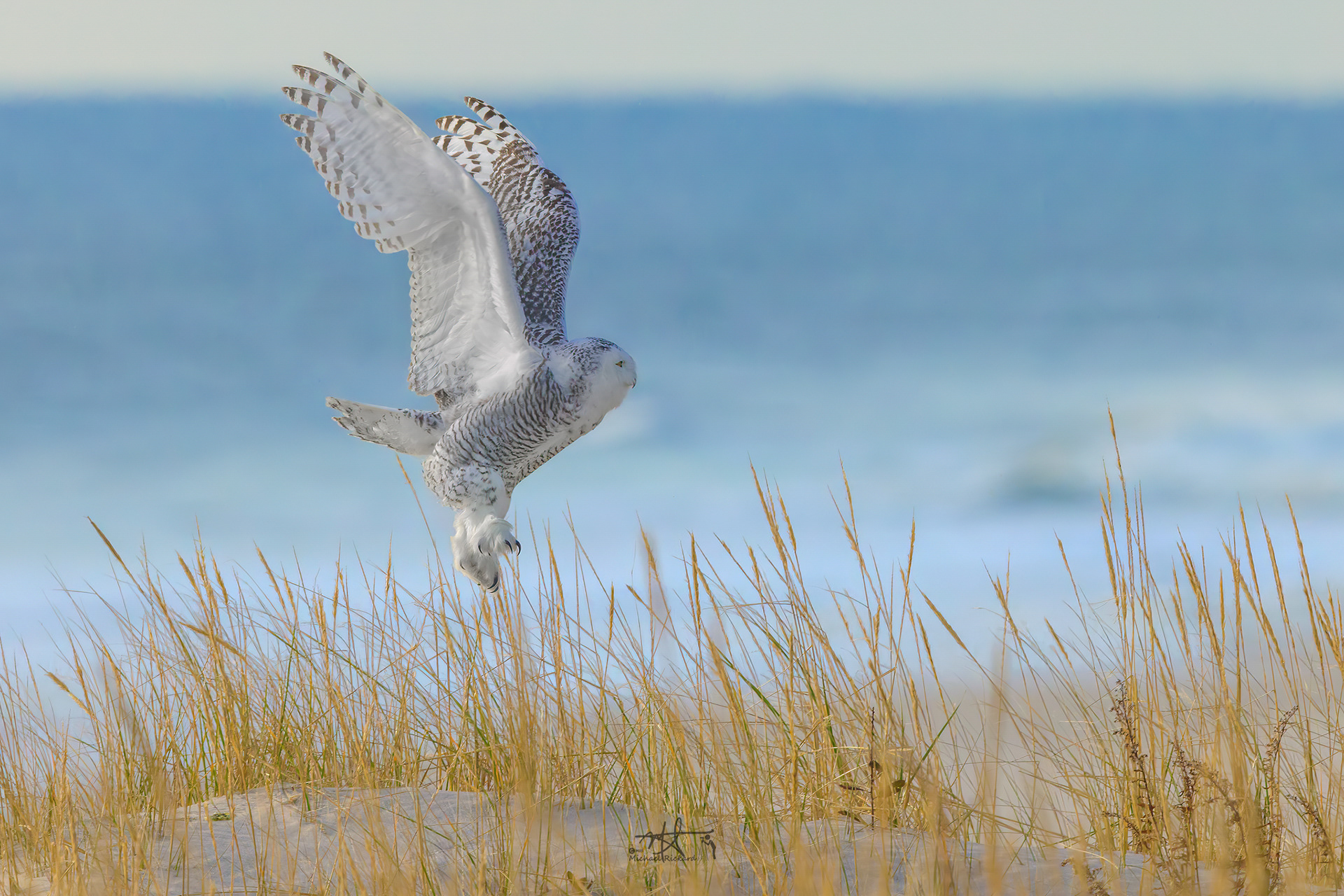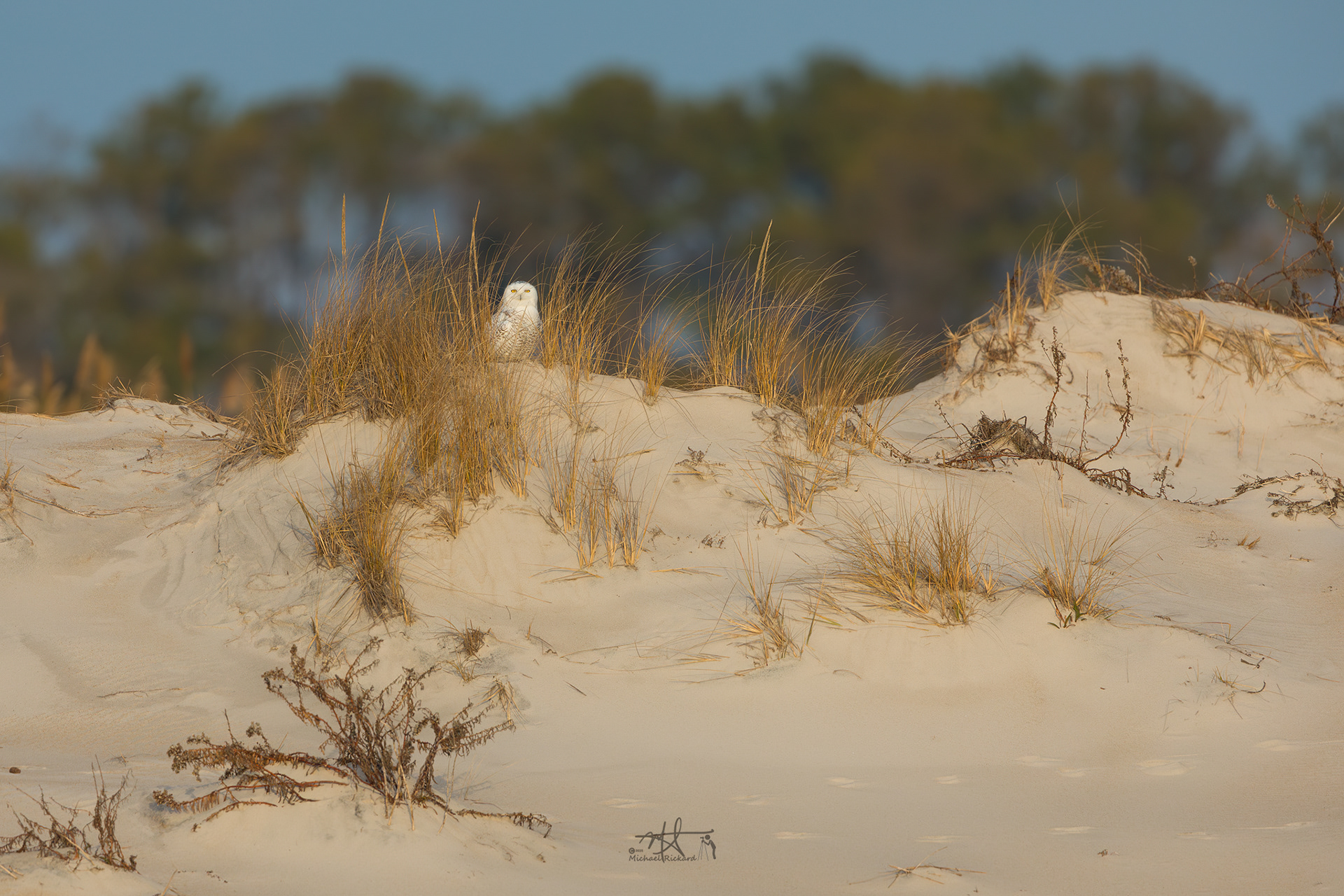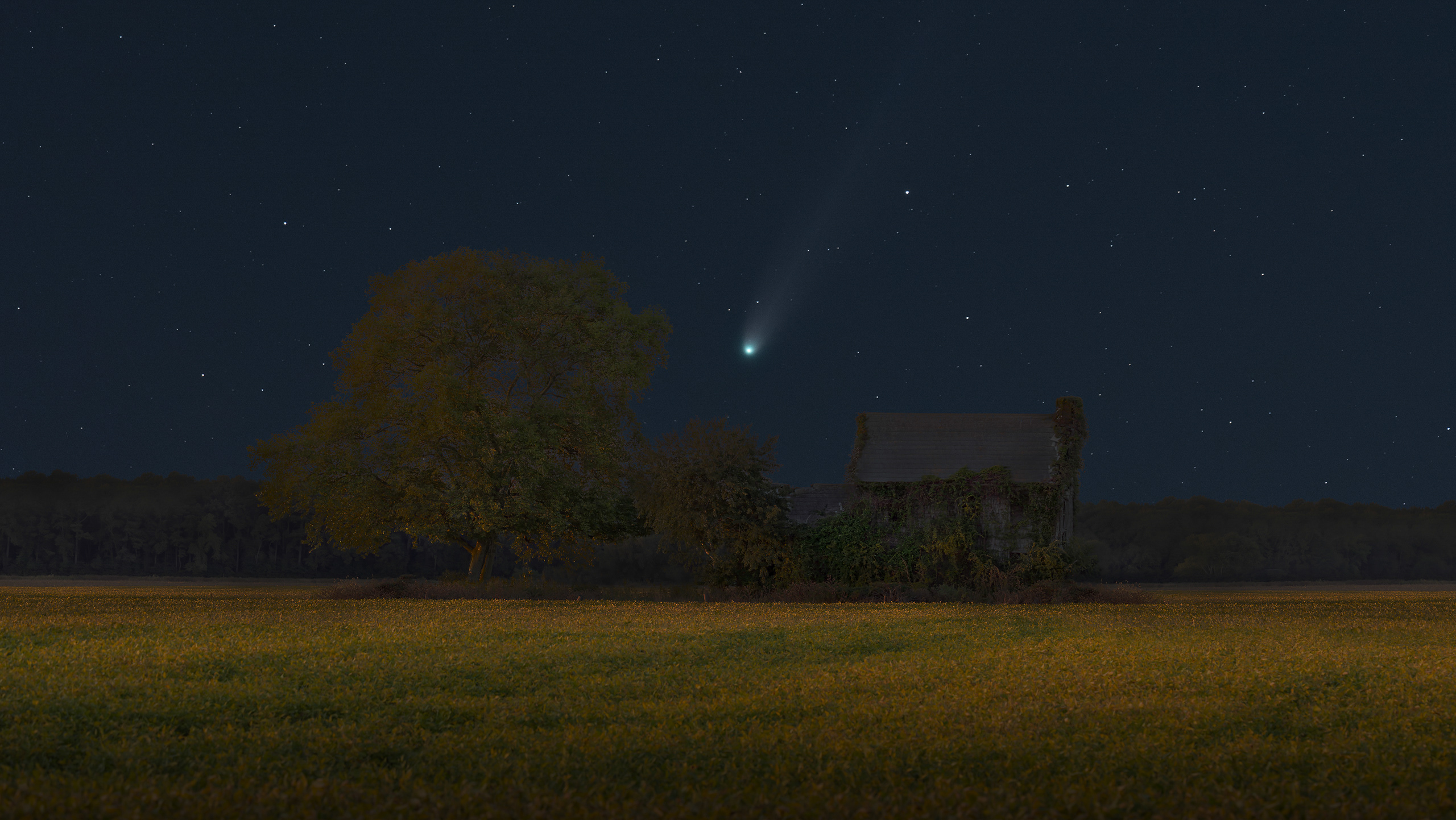Snowy Owls visit the Eastern Shore of Maryland with the seashores of Maryland and Delaware that has for years proved to be an acceptable home away from their natural habitat of the Arctic north. With a landscape mimicking the tundra to the north, and what appears to be an acceptable food supply, the visiting owls sometimes stay for the entire winter. Watching their almost robotic movements is mesmerizing, and it’s wonderful when folks are able to get out and find any of the snowy owls that visit, but unfortunately not everyone respects the need for them to rest during the daytime. The owls usually draw big crowds of curious onlookers wanting nothing more than images and memories. This certainly isn't about staying away from them because I enjoy photographing them, too. But, staying farther away and enjoying them for as long as you wish.
I tried something new this year and used my 600mm coupled with my 2x teleconverter giving me 1200mm of ‘zoom’. I honestly didn’t think the real world images would turn out that great (teleconverters tend to reduce image quality), but I recently purchased a Canon R3 and the focus ability and power to drive the lens combination was much better than I anticipated. The ability to use that combination left a lot of room between me and the owl; I even found myself backing up at times just to get more of the surroundings in.
So, back to this past year's snowy owl. Friends of mine first spotted the owl on December 31st so my wife and I headed down to meet them. They showed us the owl, and after we took some images we decided to just drive down the OSV a bit farther. That’s when we spotted the whale that was highlighted in my last post. Once the whale swam back out into the open ocean, we continued down the OSV and then returned to the snowy owl for sunset. It really was a perfect way to end the year.
Fortunately, I did manage to have a few other opportunities to photograph the owl, but not that many. It was also nice that anytime that I went out to see it, everyone that I noticed that were also taking images were very respectful of the creature. My last opportunity to see the owl was at sunset on January 5th… A few days later the OSV closed down due to overwash, and by the time it opened again the snowy owl was gone.
I won’t pretend I know much about snowy owls, but what I learned from other folks and some light reading is the owls that leave their grounds in the Arctic are usually younger owls. I’m told males may have lighter banding when younger and will turn nearly all white as they age. As far as the females go they have darker banding that they keep as they get older, although it might slightly fade. For instance, an adult female may resemble an immature male. Except for the all/nearly all white male, I am not sure how to tell the difference between the adult female and immature male, honestly. Although I believe the immature females are the ones we have seen that have really dark banding. They are also considered diurnal meaning they could feed at all hours of the day (I suppose they have to say that since their summer consists of 24 hours of light in the Arctic regions), but I am told the ones that are on Assateague for a few short weeks tend to ‘sleep’ during the day and hunt at night. That has been my experience watching them over the years, as well. They seem to hang out in one spot during the day and rest as much as possible. As the evening comes and it gets darker I’ve noticed they seem to wake up, and their activity greatly increases until they choose to fly off the dune to start hunting prey. I’ve also read that certain snowy owls will return year after year to the same winter grounds while others will stay in the Arctic year round. With that said, Assateague has had years of no snowy owls, so apparently no snowy owl has made Assateague their permanent winter retreat. But, Assateague is way farther south than their normal winter grounds, and our area is considered their irruptive area in that they will visit irregularly in the wintertime. And one last little fact, their wingspan is roughly 5 feet, and they are the heaviest owl in North America weighing in at approximately 4 pounds. I read that's about a pound heavier than my beloved great horned owls.
So, there you have it… Assateague Island’s star visitor of the year that traveled 2,000 or so miles from the north to grace us with its presence.



